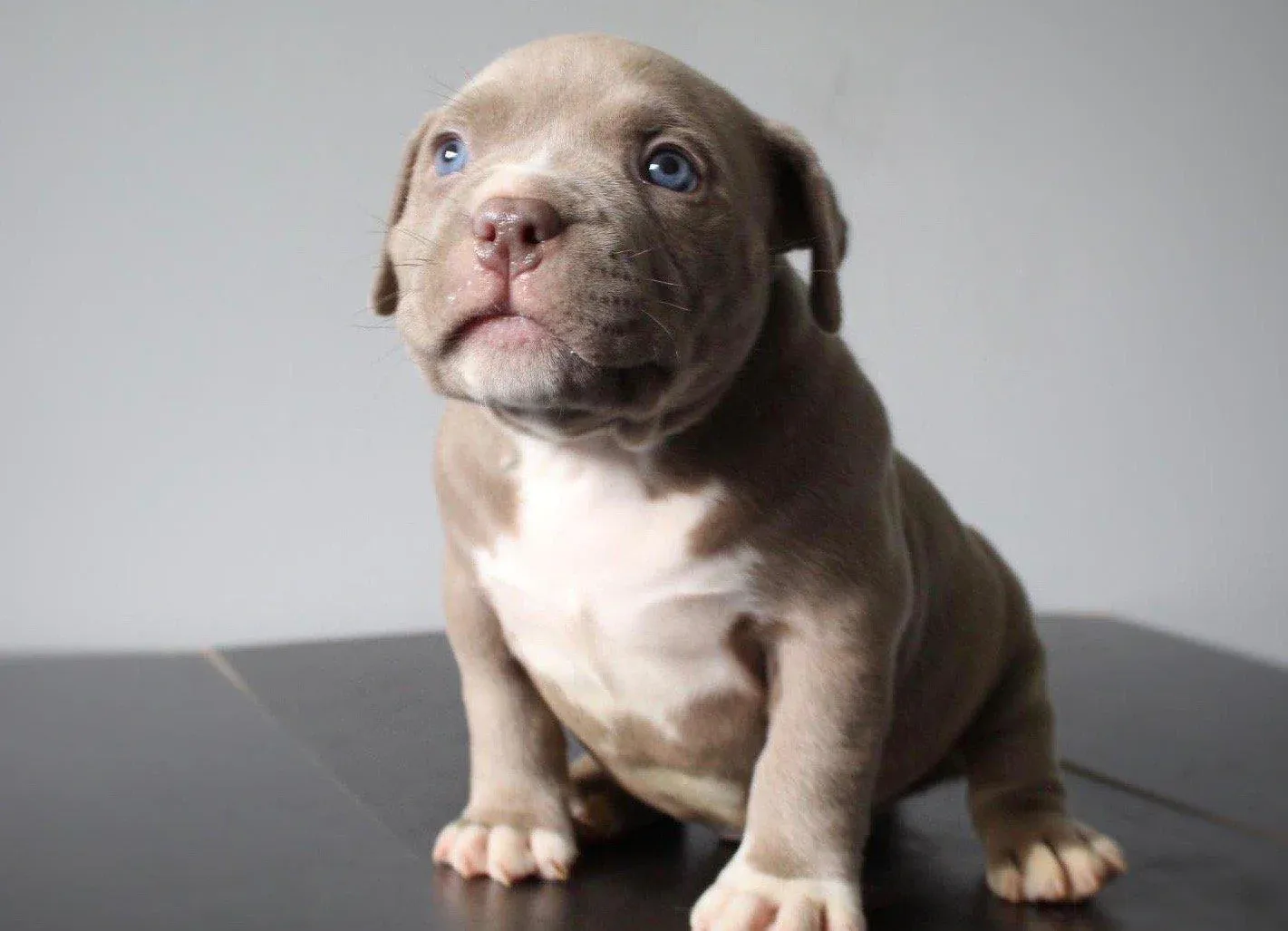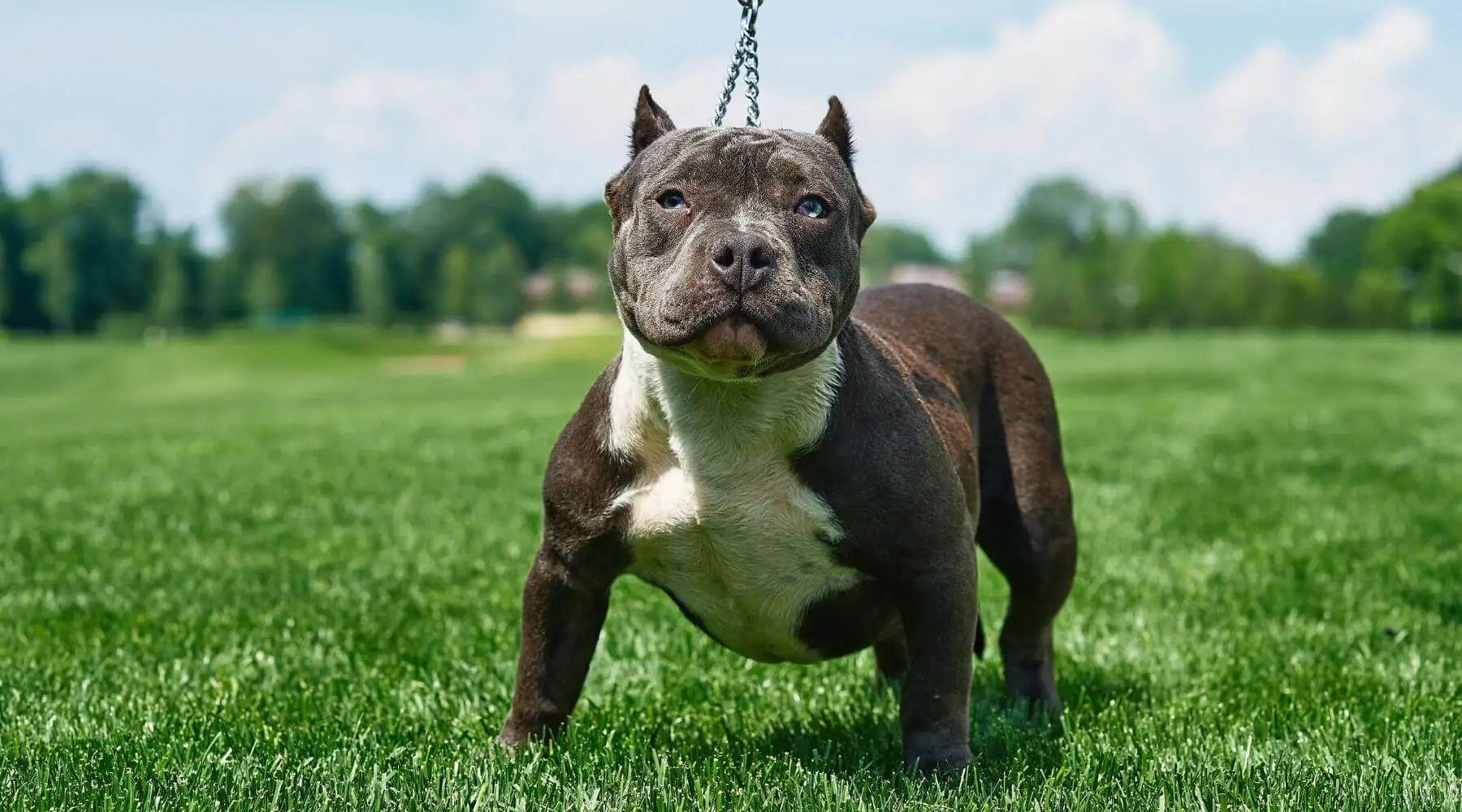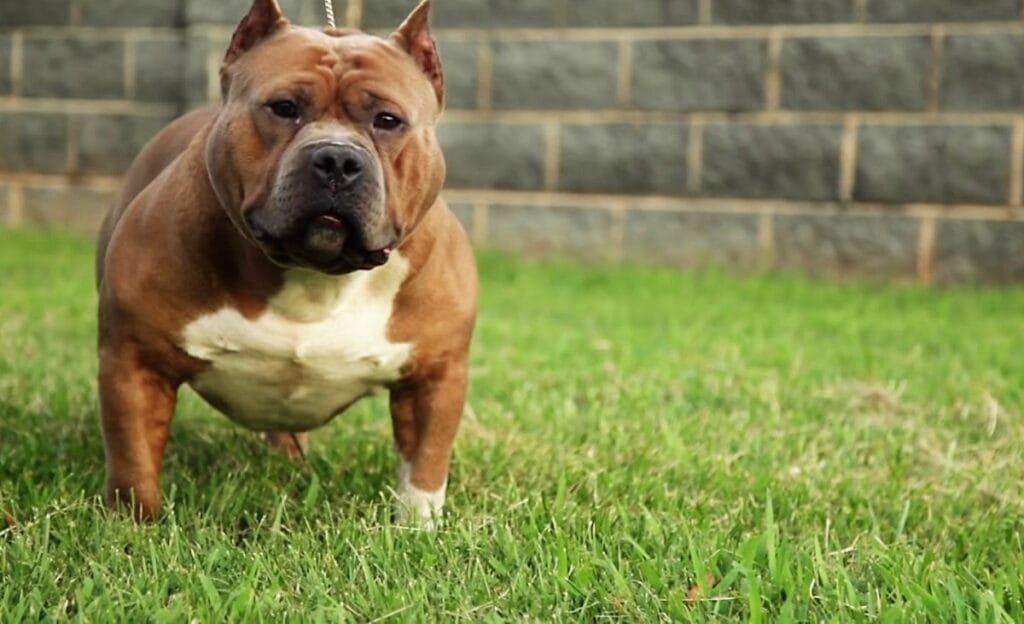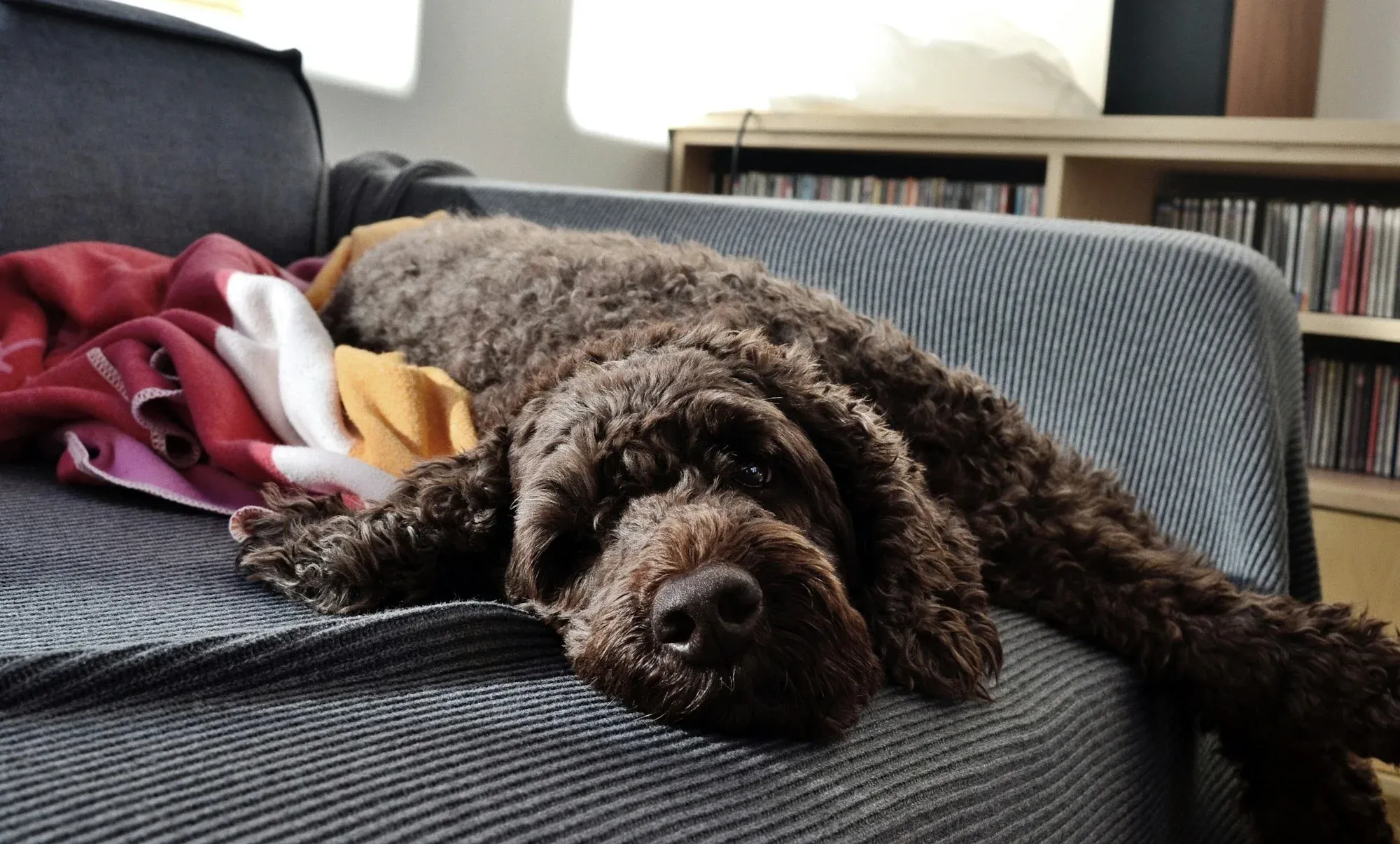Pocket Pitbulls, with their compact size and loving nature, make wonderful companions. If you're a new owner of these delightful pups, it's crucial to provide them with the best care and training from the start.
Welcoming a Pocket Pitbull into your home is an exciting journey. These adorable pups are known for their loyalty and affectionate nature. As a responsible owner, your first step is to understand the unique needs of this breed.

Before bringing home a Pocket Pitbull, research their characteristics. Ensure you choose a reputable breeder who prioritizes the health and well-being of the puppies. Look for clear signs of responsible breeding, such as proper vaccinations and a clean living environment. Here are seven essential tips to ensure a harmonious life with your Pocket Pitbull.
Tip 1. Setting Up a Safe Space at Home
Creating a secure environment for your new Pocket Pitbull is essential to ensure their safety and well-being. Follow these steps to set up a safe space at home for your furry friend.
Puppy-Proofing the Living Space
Start by identifying potential hazards in your home. Remove any small objects that could be swallowed, secure electrical cords, and block access to rooms or areas that may pose a danger to your puppy. Consider getting down to their eye level to spot potential risks.

Introducing a Comfortable Crate
A crate serves as a safe retreat for your Pocket Pitbull and aids in house training. Choose a crate that provides enough room for your puppy to stand, turn around, and lie down comfortably. Make it cozy with a soft bed or blanket and introduce positive associations by placing treats or toys inside.
Creating a safe space at home is crucial during the early stages of your Pocket Pitbull's life. It not only prevents accidents but also establishes a secure and comfortable environment where your puppy can thrive. Remember to regularly reassess the living space as your pup grows to maintain a safe and enjoyable home for your Pocket Pitbull.
Tip 2: Feeding and Nutrition Guidelines
Ensuring proper feeding and nutrition is paramount to the health and well-being of your Pocket Pitbull. Follow these guidelines to provide the best possible diet for your furry companion.
Age-Appropriate Nutrition
Understanding your Pocket Pitbull's age and life stage is crucial for determining the right nutrition. Puppies, adults, and seniors have different dietary requirements. Choose a high-quality, well-balanced dog food formulated for your puppy's age and size. Consult with your veterinarian to tailor a nutrition plan to your Pocket Pitbull's specific needs.
Establishing a Feeding Schedule
Consistency in feeding helps regulate your Pocket Pitbull's digestive system and creates a routine that benefits both you and your pup. Puppies typically require more frequent meals, while adults may transition to two meals a day. Stick to a regular feeding schedule to promote healthy eating habits.
Monitoring Treats and Snacks
While treats can be a valuable tool for training and bonding, it's crucial not to overindulge. Too many treats can lead to weight gain and nutritional imbalances. Choose high-quality, nutritious treats and incorporate them into your Pocket Pitbull's daily caloric intake. Keep an eye on the overall balance of their diet.
Understanding your Pocket Pitbull's nutritional needs is a cornerstone of responsible pet ownership. Regular veterinary check-ups can help you adjust the diet as needed, ensuring your pup receives the right nutrients for optimal health. By following these feeding and nutrition guidelines, you'll be supporting your Pocket Pitbull's growth and well-being throughout their life.
Tip 3. Training Tips for Pocket Pitbull Puppies
Training your Pocket Pitbull puppy is an exciting and rewarding journey that establishes a foundation for a well-behaved and happy companion. Here are effective training tips to guide you through this crucial stage.
Start with Basic Commands and Obedience
Begin your Pocket Pitbull's training with fundamental commands such as sit, stay, and come. Use positive reinforcement techniques like treats and praise to reward desired behaviors. Consistency is key, so practice these commands regularly in various settings to reinforce your puppy's learning.
Socialization with People and Other Pets
Early socialization is vital for your Pocket Pitbull's development. Expose your puppy to different people, environments, and other pets. Positive social interactions during the formative months help prevent behavioral issues and contribute to a well-adjusted and friendly adult dog.
Positive Reinforcement Techniques
Employ positive reinforcement to motivate your Pocket Pitbull. Reward good behavior with treats, praise, or interactive dog toys to create a positive association. Avoid punishment-based methods, as they can lead to fear and anxiety. Patience and consistency are essential for effective positive reinforcement.
Training your Pocket Pitbull should be a fun and bonding experience for both you and your pup. Keep sessions short, engaging, and enjoyable to maintain your puppy's interest and enthusiasm. Consistency, positive reinforcement, and a patient approach will contribute to a well-trained and well-adjusted Pocket Pitbull.
Tip 4. Healthcare Essentials
Ensuring the health and well-being of your Pocket Pitbull involves proactive and attentive healthcare. Follow these essential guidelines to keep your furry friend in optimal condition throughout their life.
Regular Veterinary Check-Ups
Schedule regular veterinary check-ups to monitor your Pocket Pitbull's overall health. These visits allow the vet to catch potential issues early and provide preventive care. Stay up-to-date with vaccinations, parasite control, and routine examinations to ensure a long and healthy life for your pup.
Vaccination Schedule
Adhere to a comprehensive vaccination schedule recommended by your veterinarian. Vaccines protect your Pocket Pitbull from contagious diseases that can be harmful or even fatal. Keep accurate vaccination records and discuss any concerns or adjustments to the vaccination plan with your vet.
Grooming Requirements
While Pocket Pitbulls have short coats, regular grooming is still essential. Brush your pup's coat to remove loose fur and distribute natural oils, promoting a healthy shine. Clean their ears, trim their nails, and brush their teeth regularly to maintain overall hygiene. Introduce grooming as a positive experience to create a stress-free routine.
By prioritizing regular veterinary check-ups, following a vaccination schedule, and addressing grooming needs, you contribute significantly to your Pocket Pitbull's health and happiness. Proactive healthcare ensures that your pup thrives, allowing you both to enjoy a long and fulfilling companionship.
Tip 5. Exercise and Playtime
Ensuring adequate exercise and playtime is vital for the health and well-being of your Pocket Pitbull. These energetic and lively dogs thrive on physical activity and mental stimulation. Follow these guidelines to provide a fulfilling exercise routine for your furry friend.

Age-Appropriate Exercise Routines
Tailor the exercise routine to suit your Pocket Pitbull's age and energy level. Puppies require shorter bursts of play and exercise, gradually increasing as they grow. Adult Pocket Pitbulls benefit from more extended walks, runs, and engaging activities. Adjust the intensity to prevent overexertion, especially in hot weather.
Importance of Mental Stimulation
In addition to physical exercise, mental stimulation is crucial for Pocket Pitbulls. Engage your pup's mind with puzzle toys, interactive games, and training sessions. Mental stimulation helps prevent boredom, reduces destructive behaviors, and contributes to a well-rounded and happy dog.
Engaging Toys and Activities
Provide a variety of toys to keep your Pocket Pitbull entertained. Toys that challenge their problem-solving skills or satisfy their natural chewing instincts are excellent choices. Rotate toys regularly to keep things interesting. Outdoor activities like fetch or agility training can also be enjoyable and beneficial for both physical and mental health.
Regular exercise not only maintains your Pocket Pitbull's physical health but also strengthens the bond between you and your furry companion. Aim for a mix of aerobic and anaerobic activities to keep your pup fit and engaged. Remember, a tired dog is a happy dog, so invest time in creating a well-rounded exercise and playtime routine for your Pocket Pitbull.
Tip 6.Understanding the Pocket Pitbull's Temperament
Getting to know the temperament of your Pocket Pitbull is essential for building a strong and positive relationship. Contrary to common misconceptions, Pocket Pitbulls are known for their loyalty, affection, and unique personality traits.
Loyalty and Affection
Pocket Pitbulls are renowned for their unwavering loyalty and deep affection towards their owners. They form strong bonds with their human families and thrive on companionship. Expect your Pocket Pitbull to become a devoted and loving member of your household.
Addressing Potential Aggression Issues
While Pocket Pitbulls are generally friendly and sociable, it's essential to address any signs of aggression promptly. Early socialization and positive reinforcement play a crucial role in preventing aggressive behavior. Expose your puppy to various situations, people, and other pets to ensure a well-rounded and well-behaved adult dog.
Building a Strong Bond
Fostering a strong bond with your Pocket Pitbull involves spending quality time together. Engage in play, walks, and positive interactions. Praise and rewards for good behavior strengthen the bond and build trust. Remember, a well-loved and understood Pocket Pitbull is likely to reciprocate with affection and obedience.
Understanding your Pocket Pitbull's temperament also involves recognizing individual differences. Each dog has its unique personality, influenced by genetics, environment, and early experiences. Pay attention to your puppy's cues, preferences, and reactions to different stimuli.
In summary, Pocket Pitbulls are known for their affectionate nature and loyalty. By addressing potential aggression issues early on and actively building a strong bond through positive interactions, you'll ensure a harmonious and loving relationship with your Pocket Pitbull.

7. Dealing with Common Challenges
As a responsible Pocket Pitbull owner, it's essential to be prepared for and address common challenges that may arise during your pup's early years. Proactive management and understanding can make a significant difference in navigating these challenges successfully.
Housetraining Difficulties
Housetraining is a common challenge for many puppy owners. Establish a consistent routine for bathroom breaks, praise your Pocket Pitbull for outdoor success, and clean indoor accidents promptly with enzymatic cleaners. Patience and positive reinforcement are key to housetraining success.
Chewing and Teething Issues
Pocket Pitbull puppies, like all dogs, go through a teething phase. Provide appropriate chew toys to satisfy their urge to chew and soothe their gums. Rotate toys regularly to keep them interesting, and discourage inappropriate chewing by redirecting to approved items.
Handling Separation Anxiety
Pocket Pitbulls are known for their loyalty, which can sometimes lead to separation anxiety. Gradually acclimate your pup to alone time, starting with short intervals and gradually increasing. Leave comforting items, like a blanket or toy, and avoid making departures or arrivals overly dramatic.
Every dog is unique, and individual challenges may vary. It's crucial to observe your Pocket Pitbull's behavior closely, respond to their needs, and seek professional advice if challenges persist. Remember, patience, consistency, and positive reinforcement are your allies in overcoming common challenges during your Pocket Pitbull's early stages.
By being proactive and addressing challenges with empathy and understanding, you'll contribute to a positive and supportive environment for your Pocket Pitbull's development.
Conclusion
In conclusion, being a Pocket Pitbull owner is a rewarding experience filled with love and companionship. Remember to tailor your care to the specific needs of this breed, and you'll undoubtedly enjoy a lifetime of joy with your new furry family member.

Frequently Asked Questions
- Q1: What makes Pocket Pitbulls suitable for families with children?
- A: Pocket Pitbulls are known for their affectionate nature and can be excellent companions for children when properly socialized. Their loyalty and gentle temperament make them family-friendly.
- Q2: How often should I feed my Pocket Pitbull puppy, and what should I feed them?
- A: Feed your Pocket Pitbull puppy three to four small meals a day, transitioning to two meals as they grow. Choose a high-quality, age-appropriate dog food and follow recommended feeding guidelines. Consult your vet for personalized advice.
- Q3: Are Pocket Pitbulls prone to aggressive behavior?
- A: No, Pocket Pitbulls are not inherently aggressive. Early socialization, positive reinforcement training, and proper care contribute to a well-behaved and friendly adult dog. Address any signs of aggression promptly with consistent training.
- Q4: How much exercise do Pocket Pitbulls need, and what activities are suitable for them?
- A: Pocket Pitbulls need at least 30 minutes to an hour of exercise per day. Engage them in activities like walks, runs, and interactive play. Mental stimulation is also crucial, so include puzzle toys and training sessions in their routine.
- Q5: Can Pocket Pitbulls adapt to apartment living?
- A: Yes, Pocket Pitbulls can adapt well to apartment living if they receive sufficient exercise and mental stimulation. Regular walks, playtime, and proper training contribute to a content and well-adjusted pup in smaller living spaces.
For more personalized information and guidance, consult with your veterinarian, who can provide tailored advice based on your Pocket Pitbull's individual needs and characteristics.

